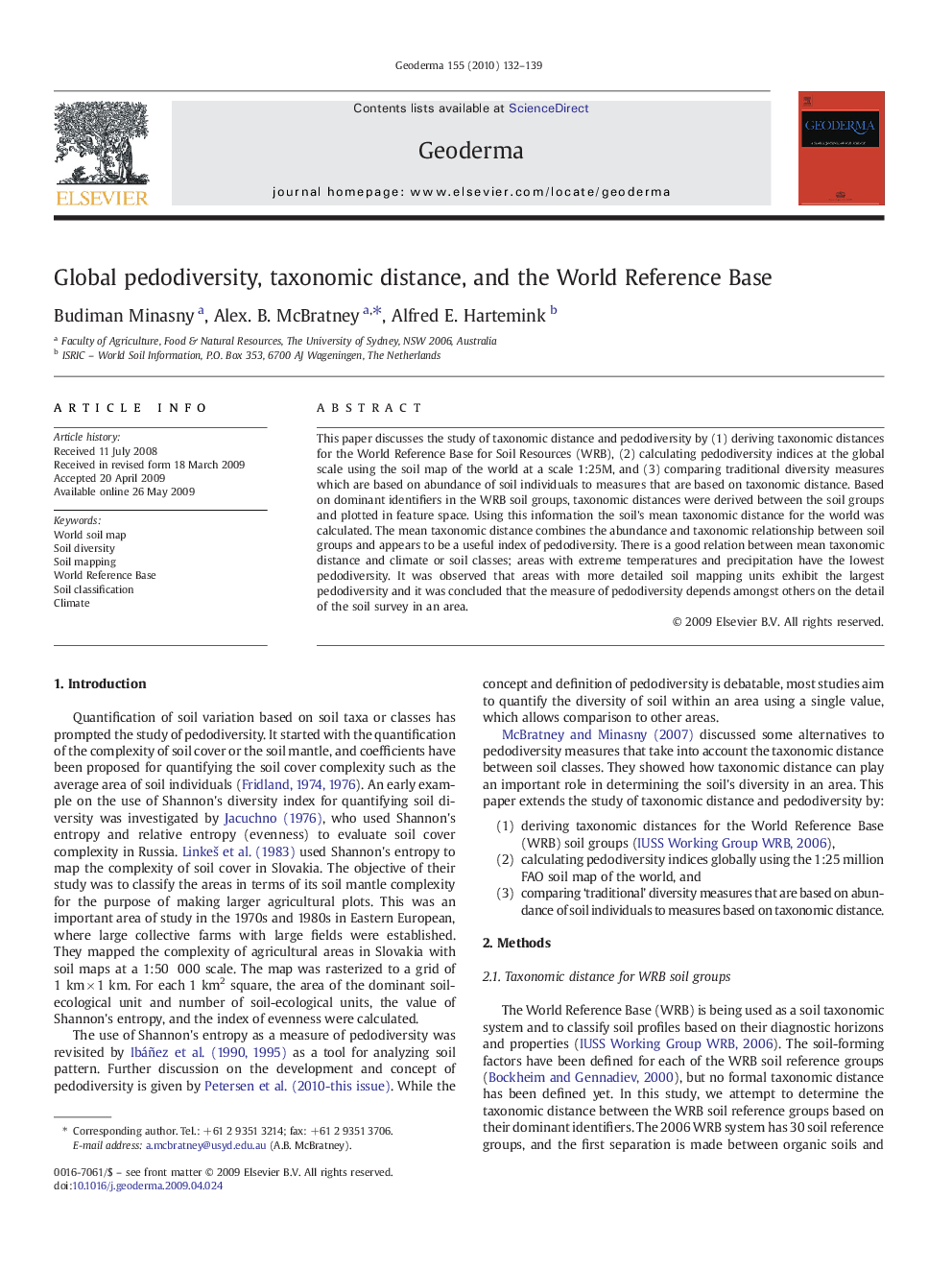| Article ID | Journal | Published Year | Pages | File Type |
|---|---|---|---|---|
| 4574668 | Geoderma | 2010 | 8 Pages |
This paper discusses the study of taxonomic distance and pedodiversity by (1) deriving taxonomic distances for the World Reference Base for Soil Resources (WRB), (2) calculating pedodiversity indices at the global scale using the soil map of the world at a scale 1:25M, and (3) comparing traditional diversity measures which are based on abundance of soil individuals to measures that are based on taxonomic distance. Based on dominant identifiers in the WRB soil groups, taxonomic distances were derived between the soil groups and plotted in feature space. Using this information the soil's mean taxonomic distance for the world was calculated. The mean taxonomic distance combines the abundance and taxonomic relationship between soil groups and appears to be a useful index of pedodiversity. There is a good relation between mean taxonomic distance and climate or soil classes; areas with extreme temperatures and precipitation have the lowest pedodiversity. It was observed that areas with more detailed soil mapping units exhibit the largest pedodiversity and it was concluded that the measure of pedodiversity depends amongst others on the detail of the soil survey in an area.
